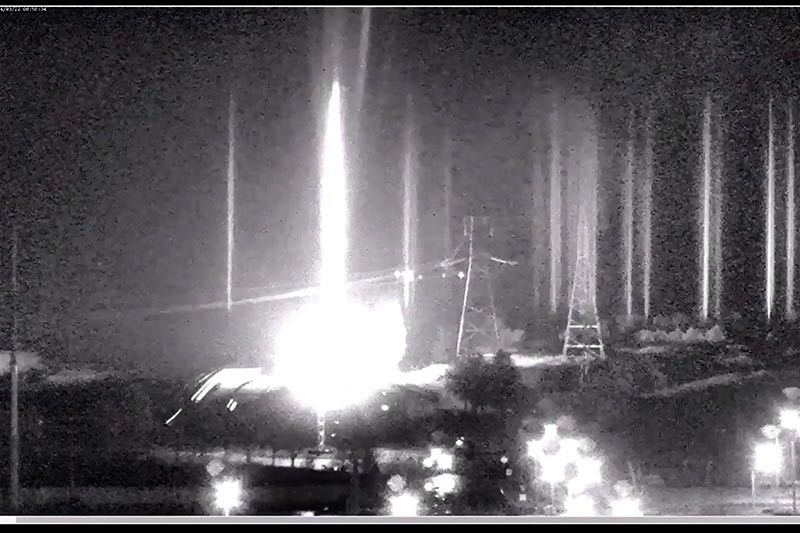Ukraine is at crossroads – and so are we

Since the Cold War ended in 1991, wars – in the form of sustained interstate conflicts – had been unthinkable in Europe. That is, until February 24, 2022.
On this day, Russia under its president, Vladimir Putin, launched a full-scale and unprovoked invasion of Ukraine.
Russia has invested huge amounts of money to rebuild its conventional military capabilities in the last few years. Its ground forces reorganized its units to conduct large-scale maneuver warfare and conducted regular unannounced large-scale military exercises near the Russian-Ukrainian borders.
The invasion began with the massive bombardment of the country with artillery and missiles as columns of Russian tanks advanced toward Kyiv, the capital of Ukraine. At the outset, the assumption was that victory for Russia would come quick. Its armed forces, after all, enjoy an overwhelming advantage in terms of number, firepower, air superiority, command-and-control infrastructure, and big-ticket weapons platforms.
But expectations of a quick victory soon evaporated. Ukrainian forces fought back Russian armor and mechanized columns and regained control of lost territories despite furious missile barrage.
So far, both Russian and Ukrainian military fatalities are estimated at around 1,500. No major Ukrainian cities have withstood the Russian onslaught. The Ukraine forces’ surprising ability to keep the Russian forces at bay, at least temporarily, has emboldened the North Atlantic Treaty Organization and the European Union (EU) to extend political support and to rush military assistance to Ukraine. Russian forces were suddenly confronted by unexpected Ukrainian resistance, and growing NATO and EU political and materiel support to the Ukrainian armed forces.
In desperation, President Vladimir Putin exasperatedly ordered the Russian defense minister to put the country’s nuclear forces in a special regime of combat duty.
I believe Ukraine’s unexpected ability to prevent an immediate Russian strategic fait accompli was made possible by its decision to challenge this regional power by adopting a limited hard balancing strategy.
There is limited hard balancing when a smaller power challenges a great power through moderate arms build-up and semi-formal alliances such as strategic partnerships. These partnerships allow joint undertaking and the pooling of resources – but not offensive warfare or coordinated military operations.
In contrast, hard balancing focuses on the overall balance of power and seeks to assemble a countervailing military coalition strong enough to keep the dominant power in check no matter what policies it decides to adopt.
The goal of limited hard balancing is modest – it seeks only to constrain the ability of the threatening power to impose its preferences on the weaker states. Instead of combining military forces or conducting joint operations, limited hard balancing links arms build-up with existing diplomatic assets to defend the national interests. It accepts the current balance of power but seeks to obtain better outcomes within it by developing adequate diplomatic and military capabilities to thwart or impede specific policies of the threatening state.
Ukraine developed a limited hard balancing policy by focusing on strictly territorial defense based on the following objectives: to deter aggression; to defend Ukraine from conventional attack when deterrence fails; and to isolate and defeat insurgency. Ukrainian territorial defense strategy is geared toward maximizing the potential of inexpensive weapons like anti-tank and anti-aircraft missile rather than the acquisition of expensive tanks and fighter planes. Although Ukraine is not a member of NATO, it adopted the operational standards so it can use weapons from the alliance’s member-states.
Finally, the strategy is not based on throwing back any full-scale attack but to delay it and make it very expensive for any invading Russian forces.
Let’s go closer to home
Five years into its six-year term, the Duterte administration reluctantly embraced a strategy of limited hard balancing towards China. This was in the face of the latter’s failure to deliver the promised loans and direct investments to finance the Philippine government’s Build, Build, Build programme, and the increasing naval presence near the artificial islands it constructed in the South China Sea.
Public sentiment against the administration’s appeasement policy forced the government to adopt a policy of limited hard balancing.
The Duterte administration resorted to this strategy by continuing some of the late President Benigno Aquino’s policies such as (1) building up the AFP’s territorial defence capabilities; (2) maintaining its alliance with the United States; and (3) fostering security partnership with Japan. These policies are all aimed at challenging China’s expansion in the SCS.
The Philippines’ efforts at limited balancing are directed against a specific Chinese policy – maritime expansion in the South China Sea, rather than against the overall distribution of power in Southeast Asia. It involves a conscious coordination of military and diplomatic actions in order to obtain outcomes contrary to Beijing’s preferences.
These are outcomes that could not be realized if Manila does not develop any limited military capabilities and combined diplomatic efforts with like-minded states that are opposed to China’s goal of maritime expansion.
In short, limited balancing seeks to limit China’s ability to impose a specific preference on the Philippines in the South China Sea.
The next Philippine president will face two challenges on June 1, 2022. Will he or she continue this strategy of limited hard balancing?
In my upcoming paper entitled “A National Security Strategy (NSS) for the 17th Philippine President: The Case for A Limited Balancing Strategy,” to be published by Stratbase ADR Institute, I emphasized that the second challenge points to the matter of transforming the current administration’s unplanned and makeshift strategy of limited hard balancing into a well-thought, comprehensive, and formal national security strategy that will guide the Philippines in the next six years.
These are difficult questions for somebody who would already have the daunting task of managing the country’s domestic socio-economic affairs. And this is why our choice for president is critical.
Dr. Renato Cruz de Castro is a trustee and convenor of the National Security and East Asian Affairs Program of think tank Stratbase ADR Institute.
- Latest























